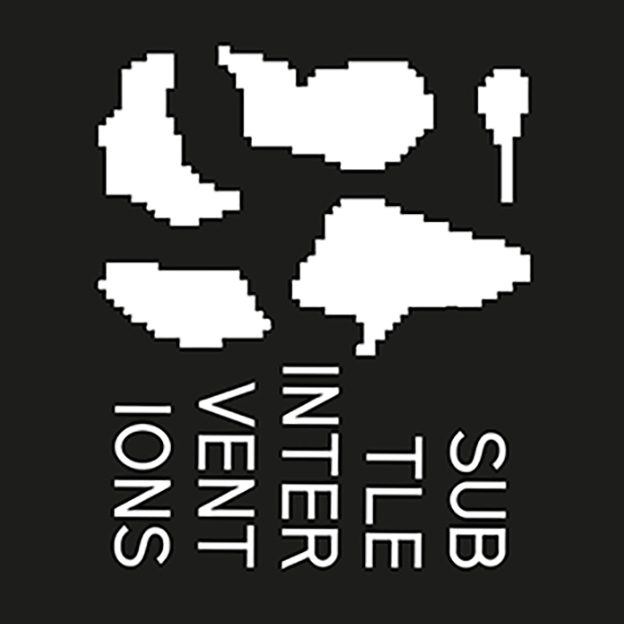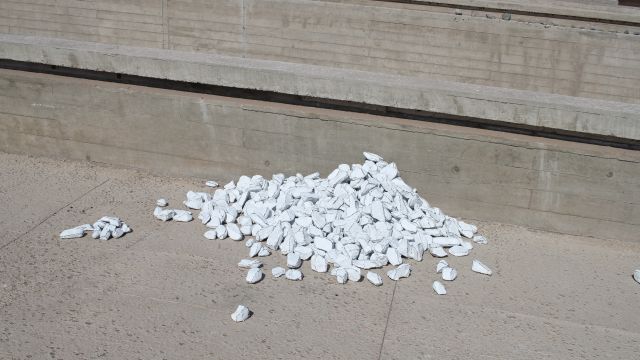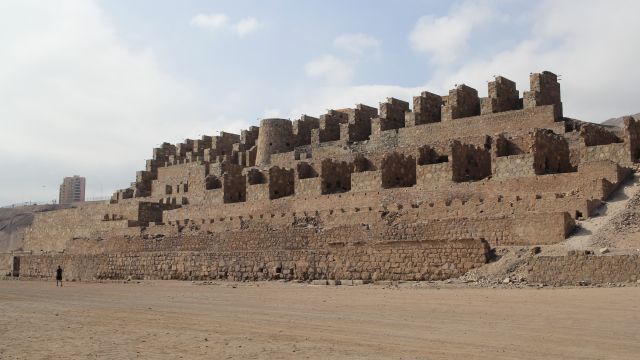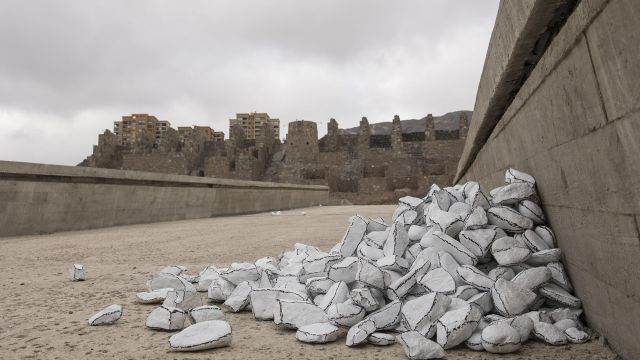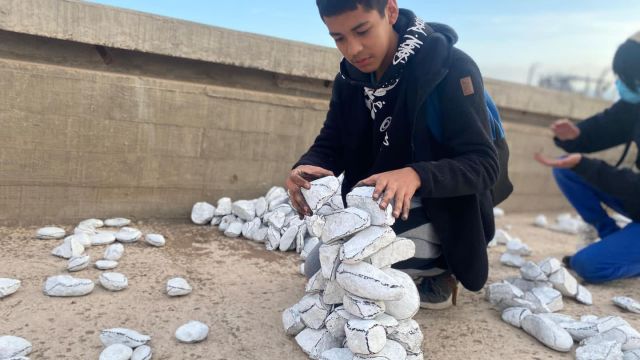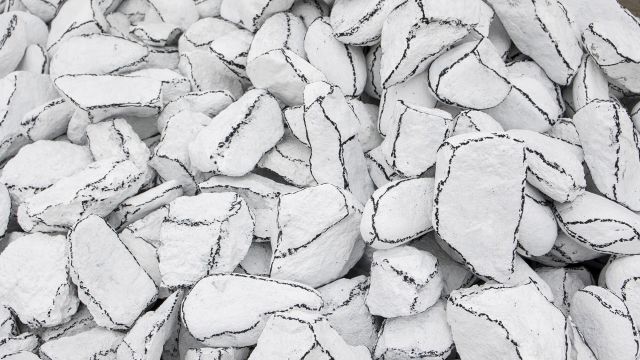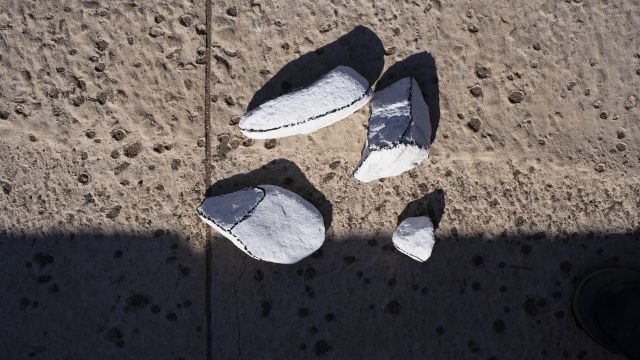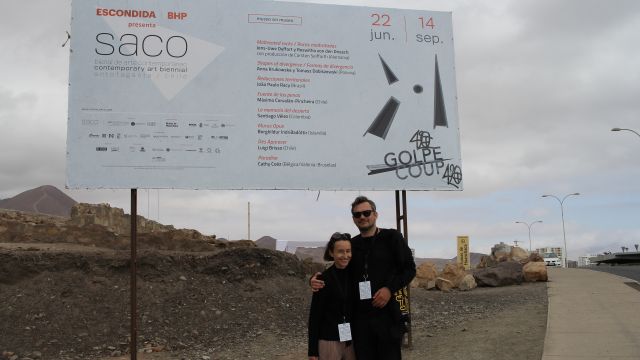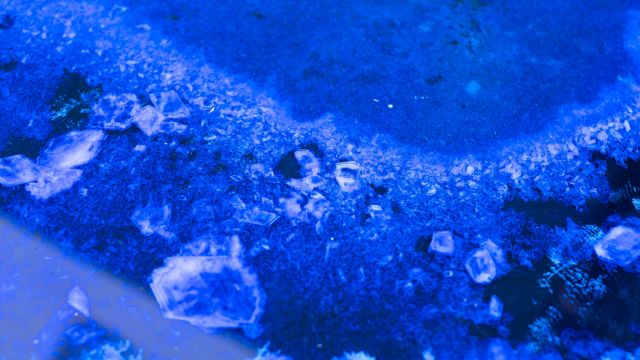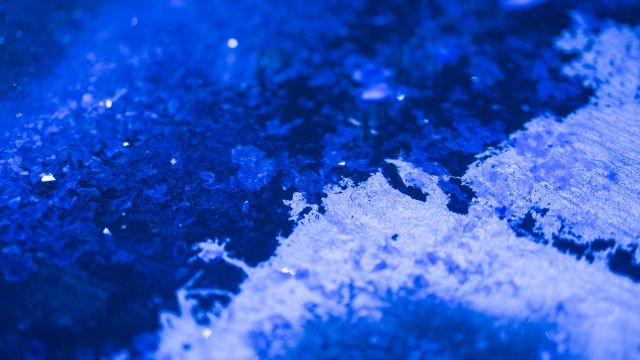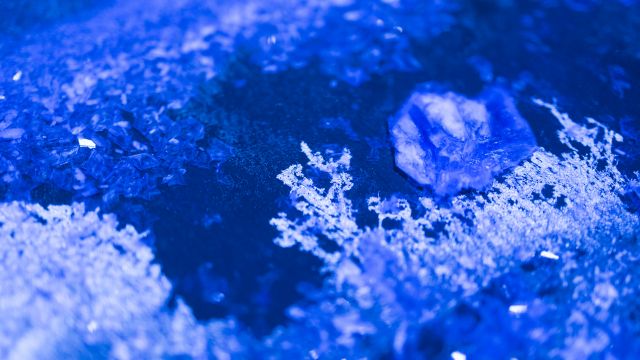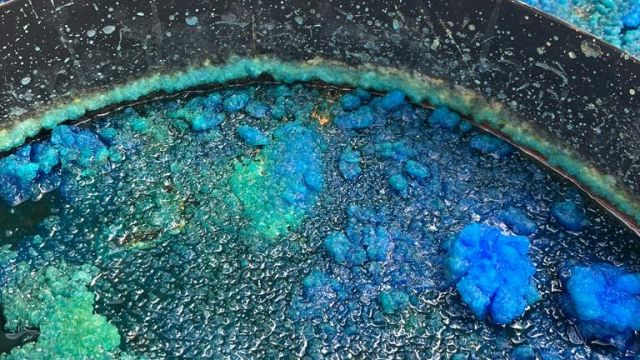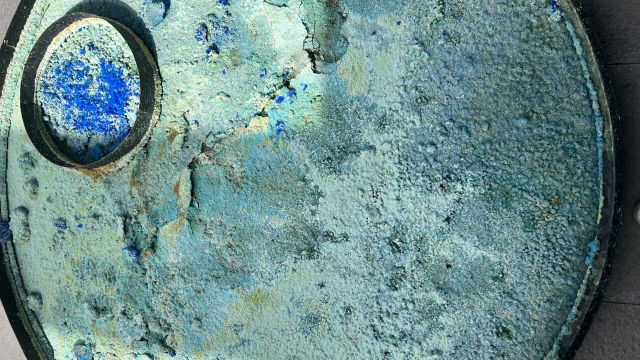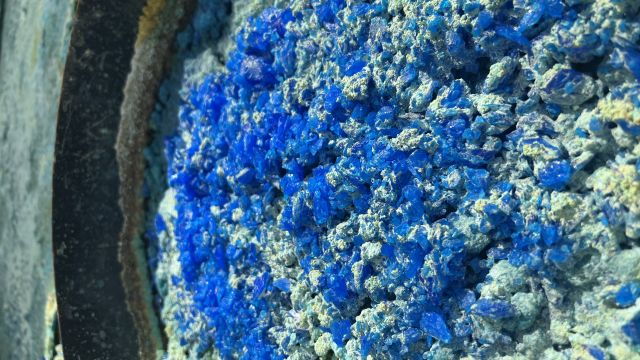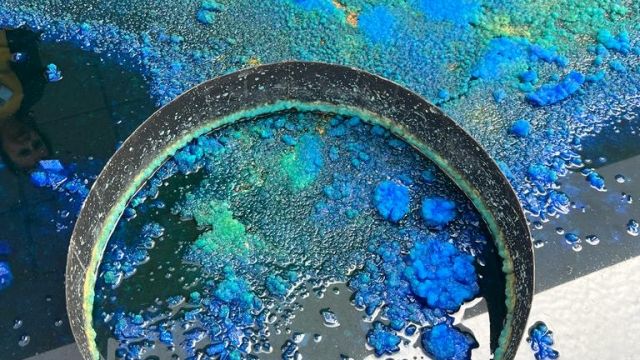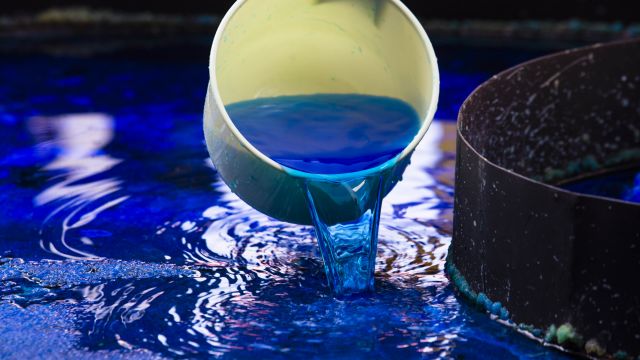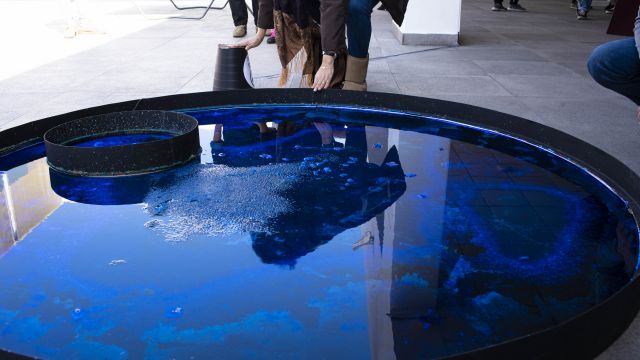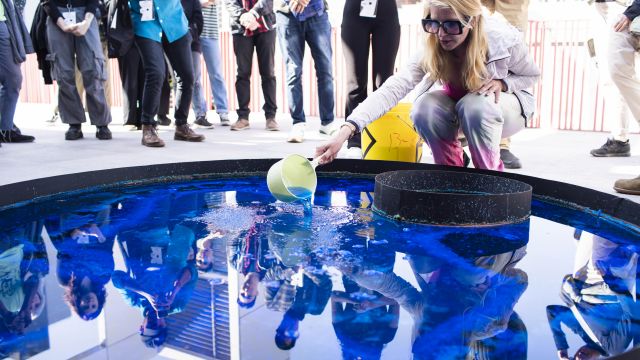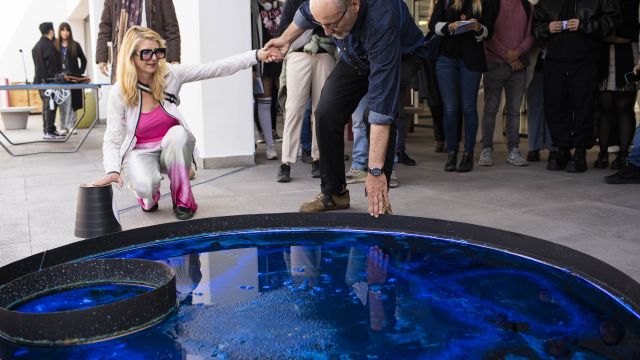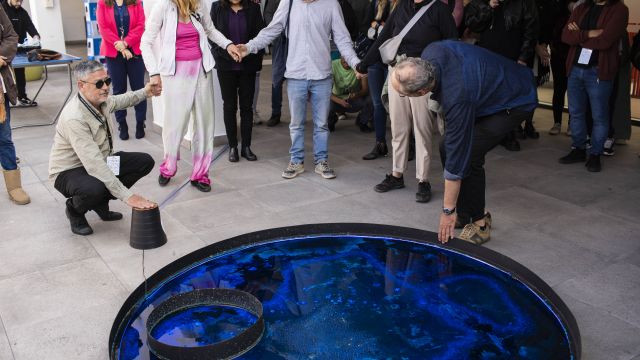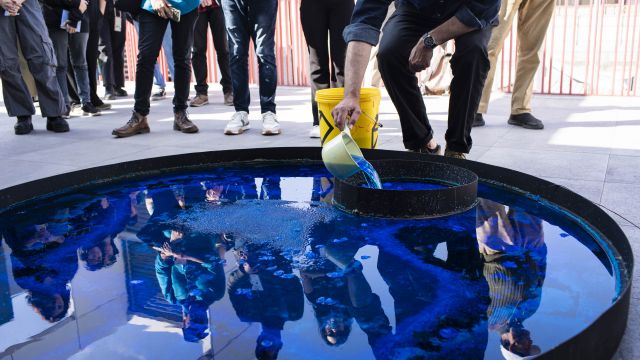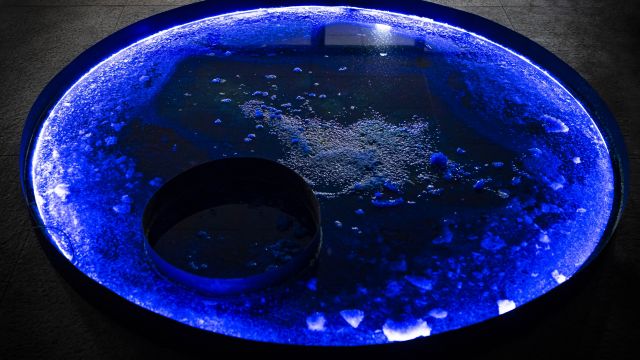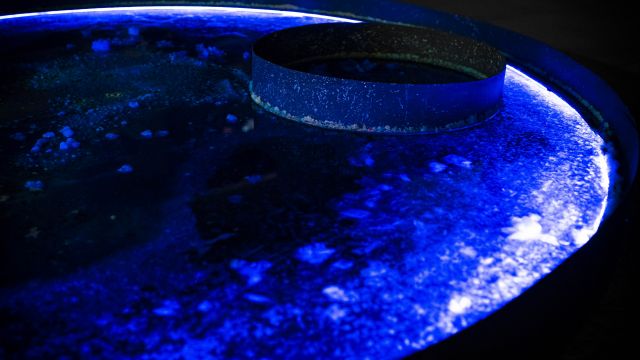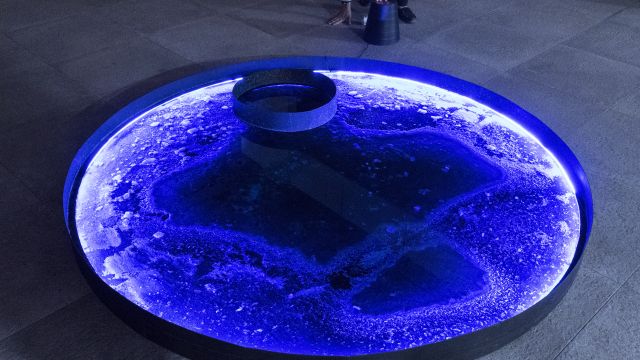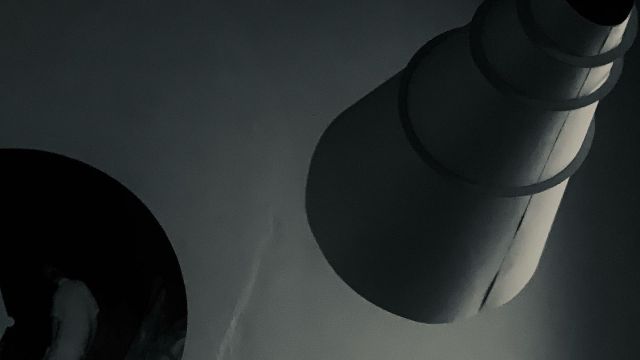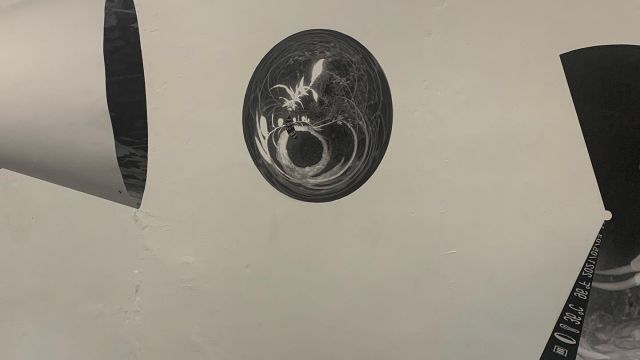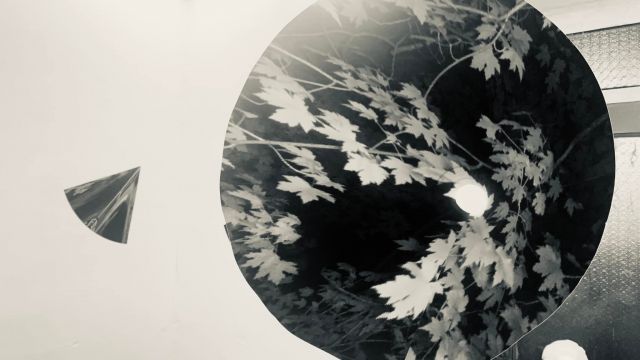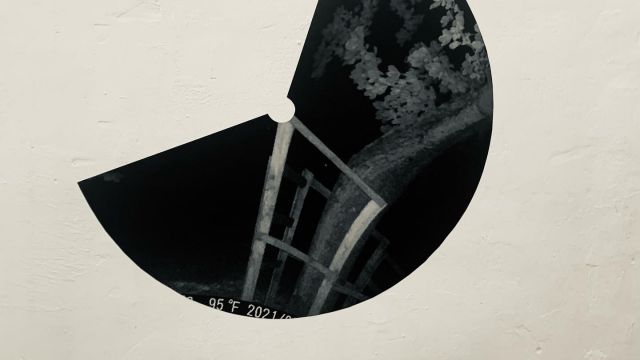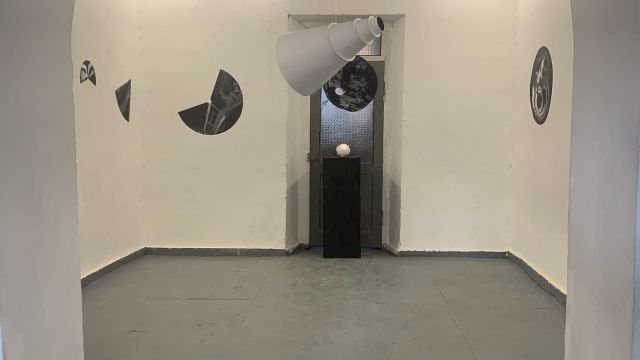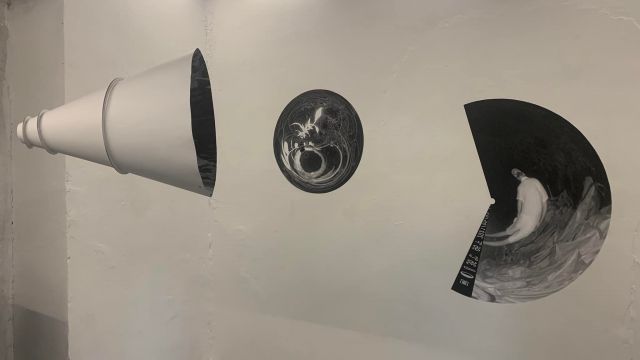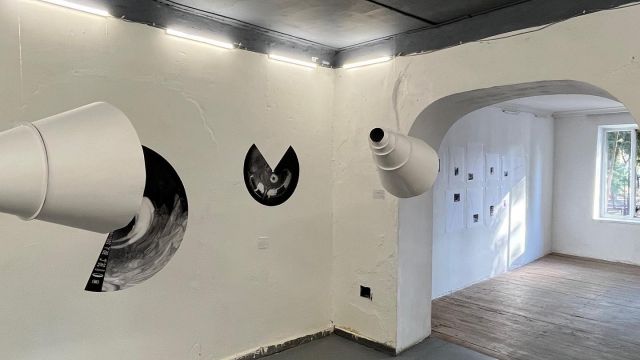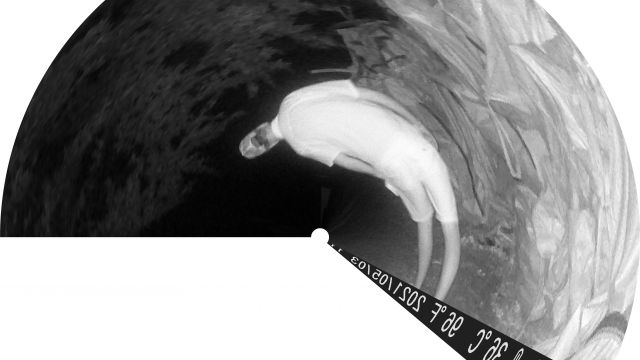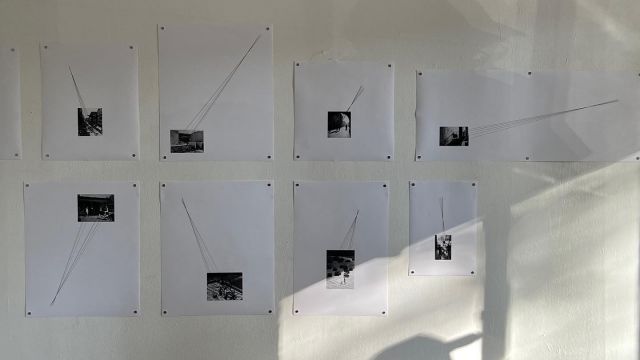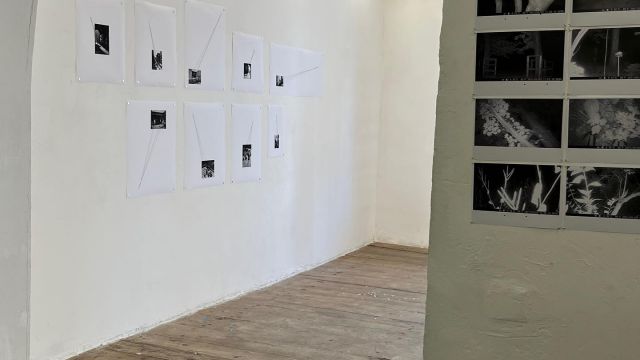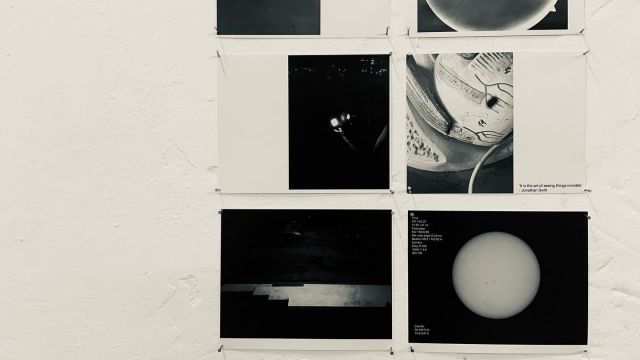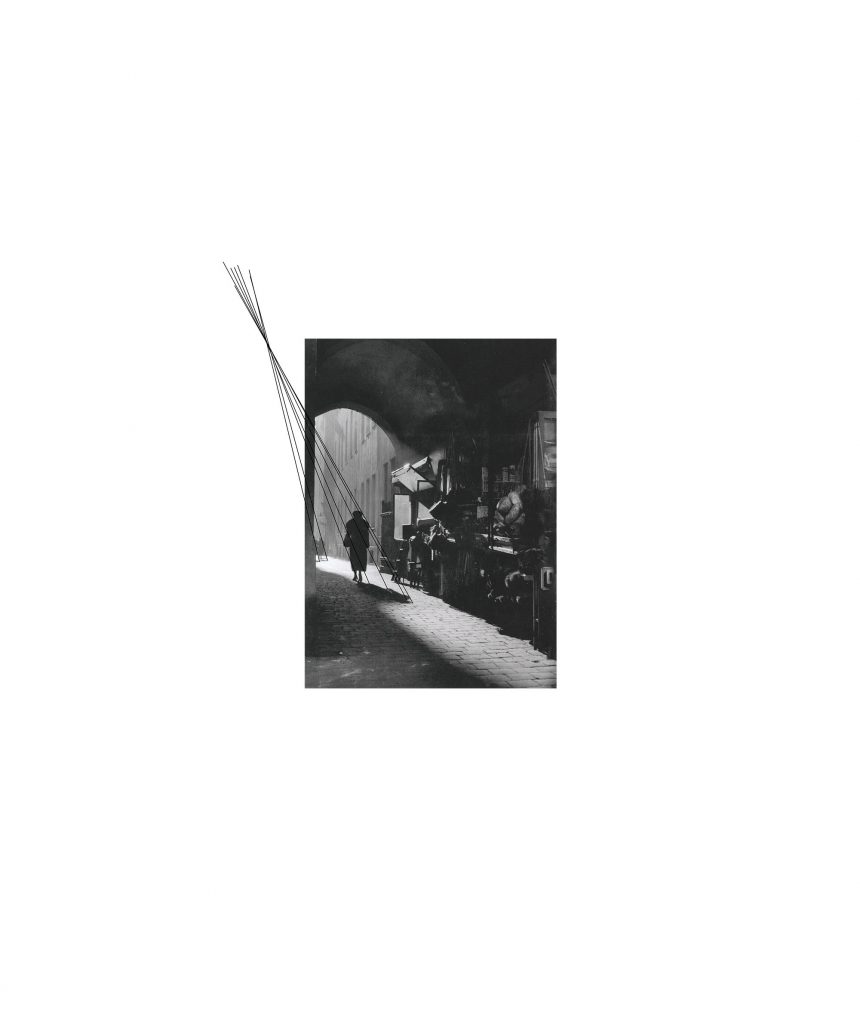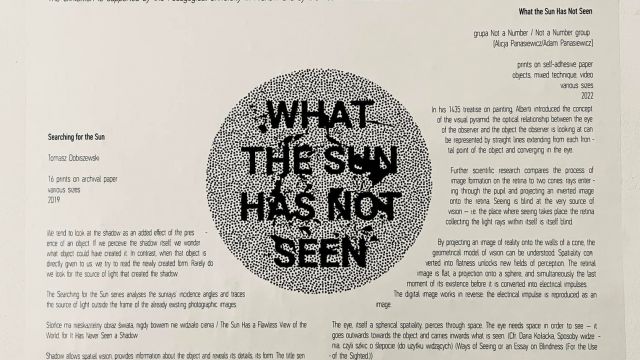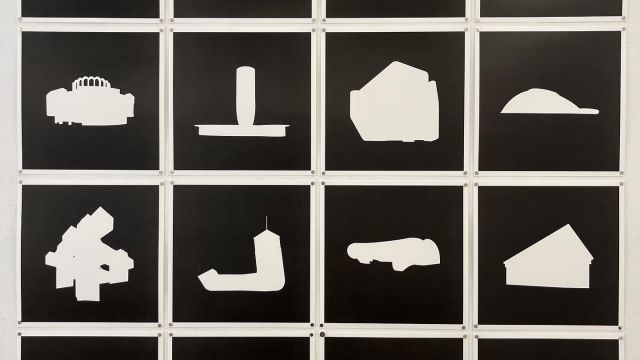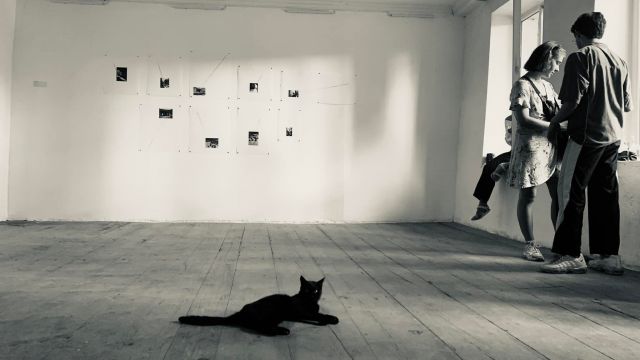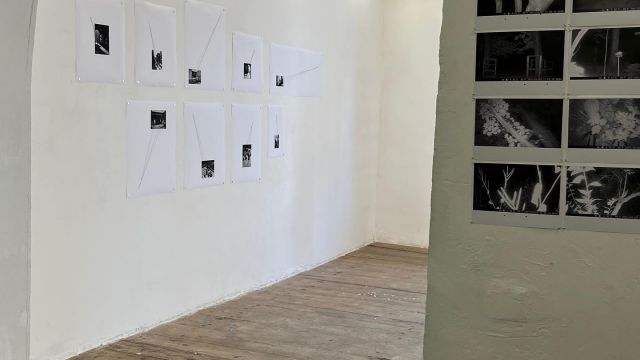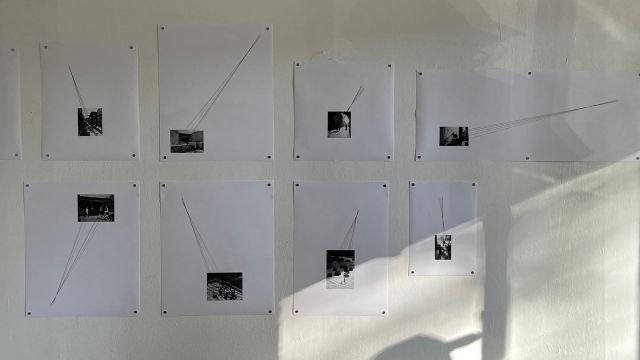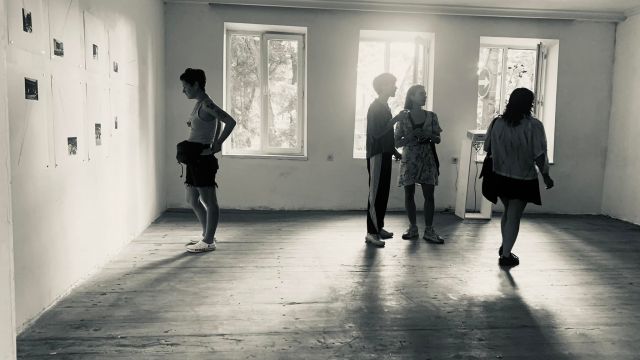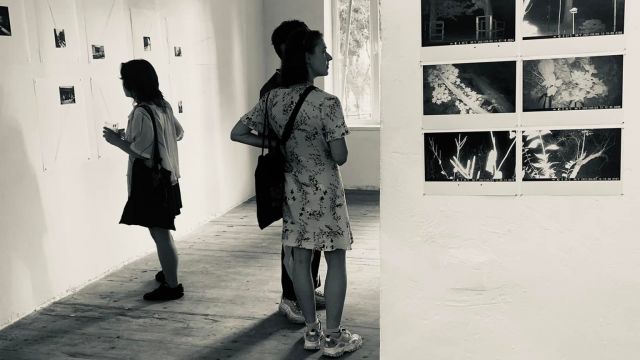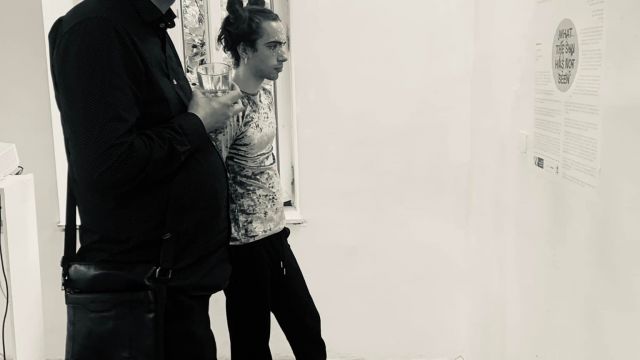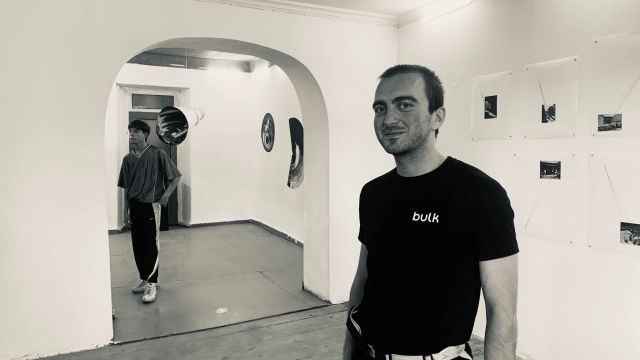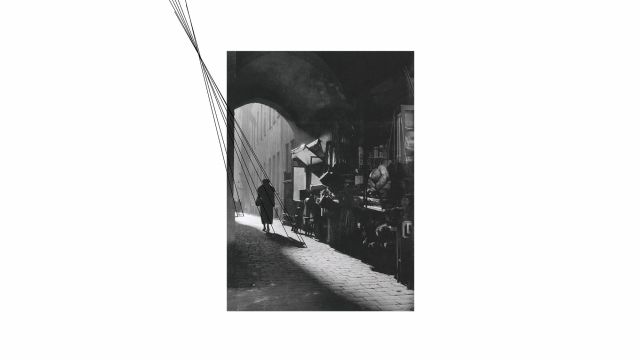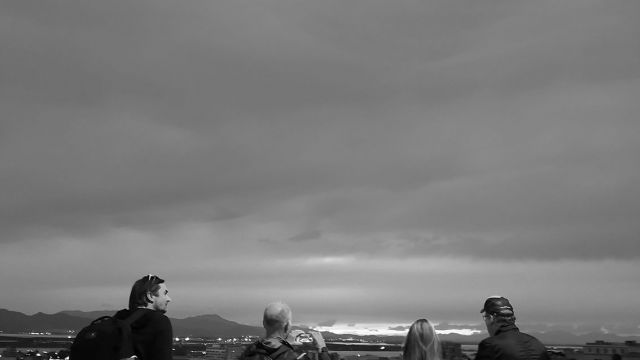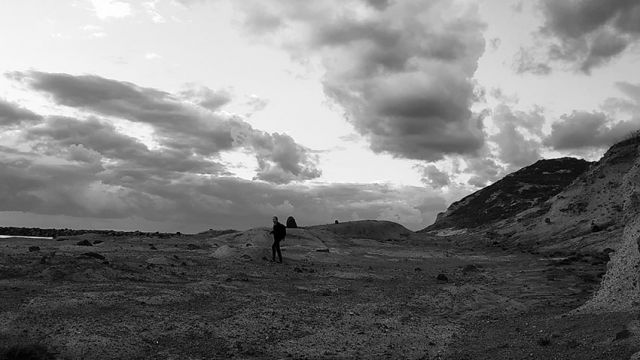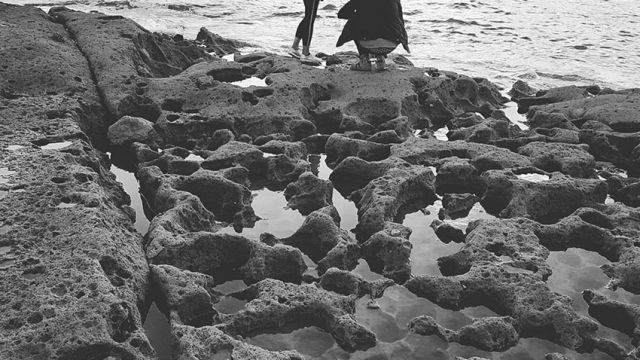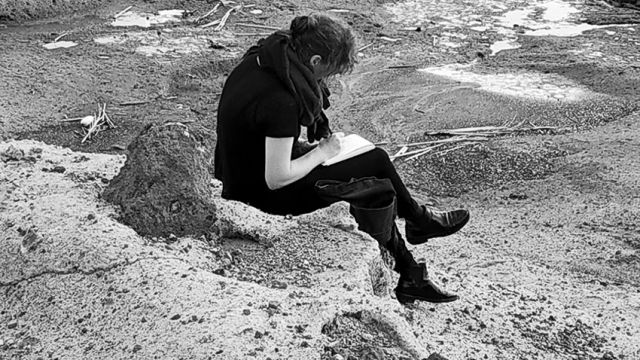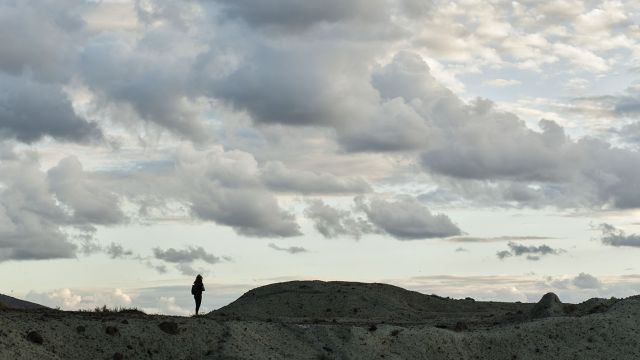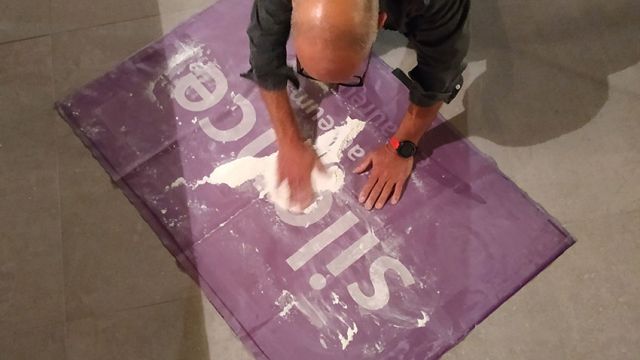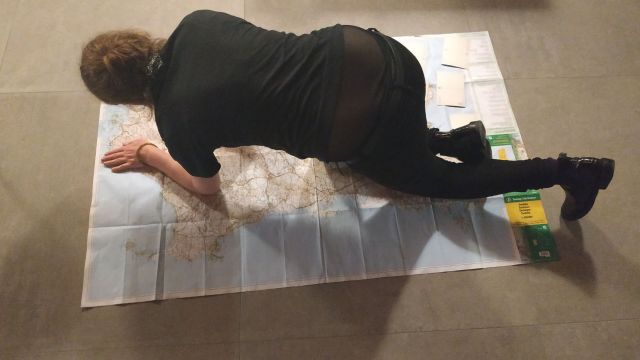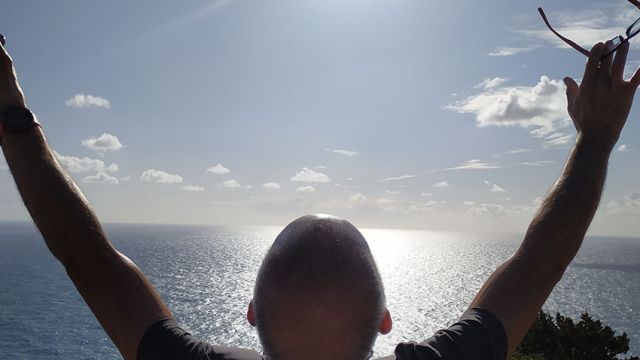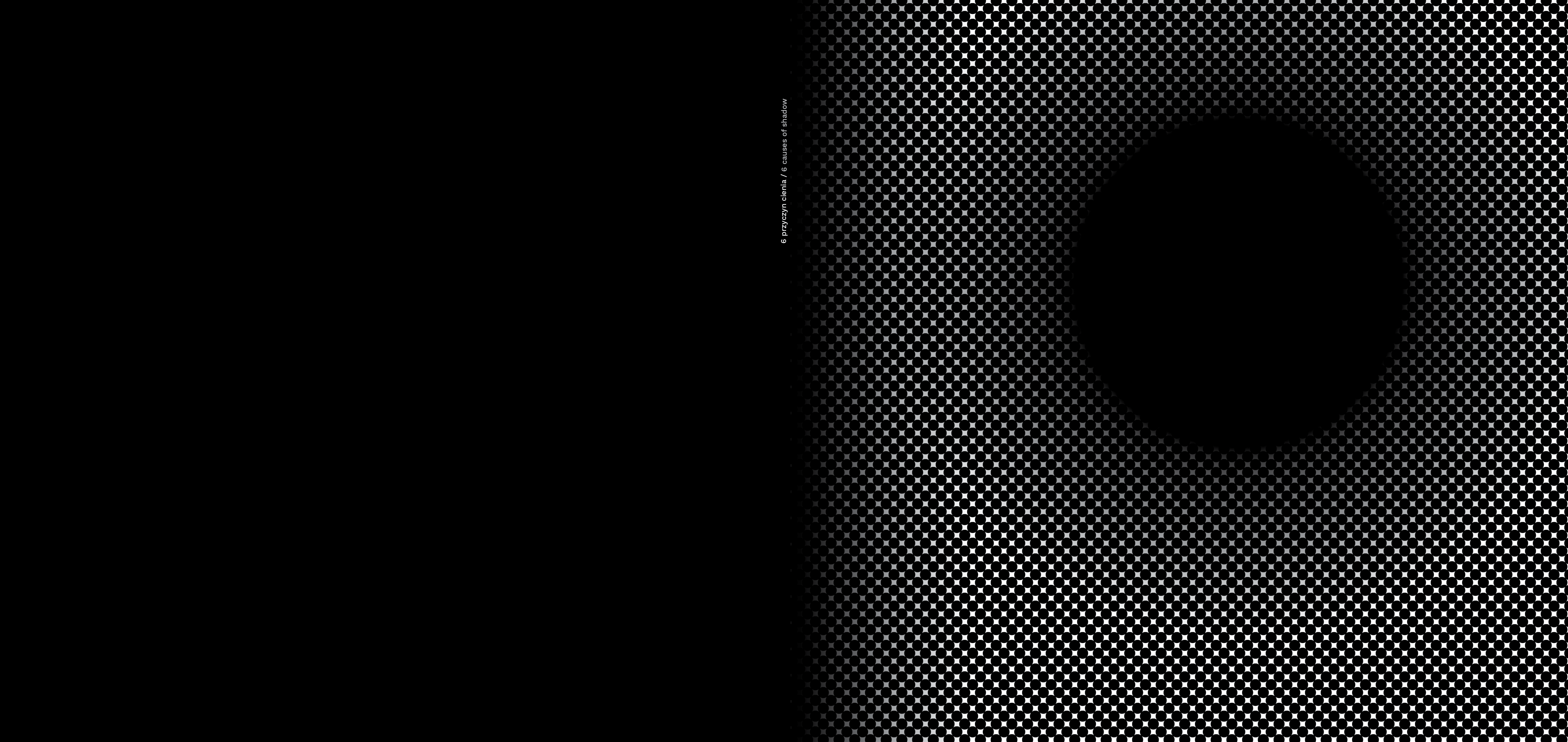Shapes of divergence
Anna Krukowska & Tomasz Dobiszewski
In some cultures and symbolism, stone is identified with strength, steadfastness, independence and perseverance. Is often associated with the earth element, which symbolises stability and permanence. In the context of rebellion, stone can be seen as a symbol of resistance against the authority or tradition that the individual is rebelling against. The stone can also be used as a weapon, which emphasises its strength and association with the struggle for freedom. It is a symbol of the struggle against a nomen omen petrifying reality. There are also numerous historical and literary examples where stones have been used as symbols of rebellion and revolution, such as in the biblical story of David and Goliath, where David kills the giant Goliath by throwing a stone at him from a slingshot.
In the Shapes of Divergence project, we worked in many ways with stones found in Antofagasta and the surrounding area. We wanted to draw attention to stones which, on the one hand, are silent witnesses of the world’s past history and, on the other hand, are a symbolic tool to fight against an unjust present, to fight for a better future.
The artist confronts cultural structures which are unlike his own —
the unknown. Interpretations always depends on personal experience and
knowledge. As creators who work in natural and cultural environments,
we should be sensitive and subtle in our ways. We choose places which
are unique in terms of the interspersion and evolution of material, as
well as immaterial heritage — both the natural and the digital. As
part of the second edition of the Subtle Interventions project, we
visited Sardinia; this is the place we have chosen to engage in
cross-cultural and interdisciplinary dialogue with. Each artist takes
on their own artistic strategies, which form a wide gamut of
interventions in existing spaces as ephemeral and performance-like
installations. Not only does the context of the place become
important, but also the cultural context, which originates from its
golden era and the process of commercialization and degradation it was
subjected to for tourism’s sake. One interesting lead for the artists
has been the clash of their expectations about the island and the
country, stereotypes, and well-known facts with the space they really
came across, its light, climate conditions, and colours.
Hello Darkness my old Friend / / Hola oscuridad, mi vieja amiga
Alicja Panasiewicz/Adam Panasiewicz
spanish below
The experience of place, the exploration of the specificity of the desert space both during the day and night, initiated a process of reflection on construction, perception, nature, and culture.
As artists working in natural and cultural settings, we should act with sensitivity, subtlety. We employ artistic strategies that create a broad spectrum of interventions in the found space as ephemeral and processual installations. It is not only the context of the place that becomes important but also the cultural context deriving from history.
The juxtaposition of notions of place and its history, the contrast of stereotypes and generally known facts with the found space, light, climate, and colours is an exciting track for us.
In the site-specific installation there are involved several aspects in the context of existence as a process, continuity despite the change, apparent duration:
site:
the Atacama desert, the driest place in the world, which can be seen as an extreme; barrenness, destruction
the Chuquicamata open-pit copper mine, copper as a symbol of wealth and destruction
dried out Salar de Atacama salt lake – in alchemy, salt is one of the principles of the world, one of the philosophical elements, one of the names of materia prima
matter:
copper as a symbol of light
the process of crystallisation, formation, maturation, change of state of aggregation
immatter:
a reference to the historical Inca technique of sky observation through reflection from the surface of water spilt on a carved stone
luminous effects associated with the flickering of light on the plane of water
The form of a circle (symbol of salt) will be limited by sloping walls (forming a kind of pool). It will be filled with copper sulphate solution or salt solution.
The installation has been variable in time: the solution has been gradually crystallised and form blue or white crystals in specific shapes obtained through the use of copper wire.

„The container” has been illuminated around the perimeter to highlight the crystalline forms.
Simultaneously, these simple, repetitive visual forms offer a multi-sensory experience: smell, touch, disruption of the sense of space, geometric distortion, and personal perception of the semiotics of space. These treatments engage the viewer in an experience, an event – a subtle intervention.
La composición de dos círculos, uno inscrito en el otro, puede aludir tanto a la naturaleza de los elementos y la biología molecular, como al cosmos, con sus ciencias y sus creencias. Pero no solo por su forma, sino también porque la obra de Alicja y Adam se encuentra en un permanente proceso de transformación. Nada está dado para siempre, no hay orden que no se desordene, y viceversa.
En el interior del recipiente se encuentra una solución de sulfato de cobre en el agua. El metal rojo nos vincula con el territorio, pero el cobre constituye también el símbolo alquímico de la luz. La presencia del sol en esta obra es clave, ya que durante estas semanas el agua se evaporará, provocando la cristalización de la estructura. En la superficie cobriza empezarán a surgir cristales de color esmeralda, acumulándose en forma de miles de rombos.
La obra alude también a la histórica técnica incaica de observar el cielo a través del reflejo en la superficie del agua vertida sobre una piedra tallada. Desde esta terraza, en el medio de la urbe, nos permite conectarnos con los procesos esenciales, tanto desde lo químico como lo espiritual.
fotos: authors, Michał Smandek, Bienal SACO1.1 Exposicion
